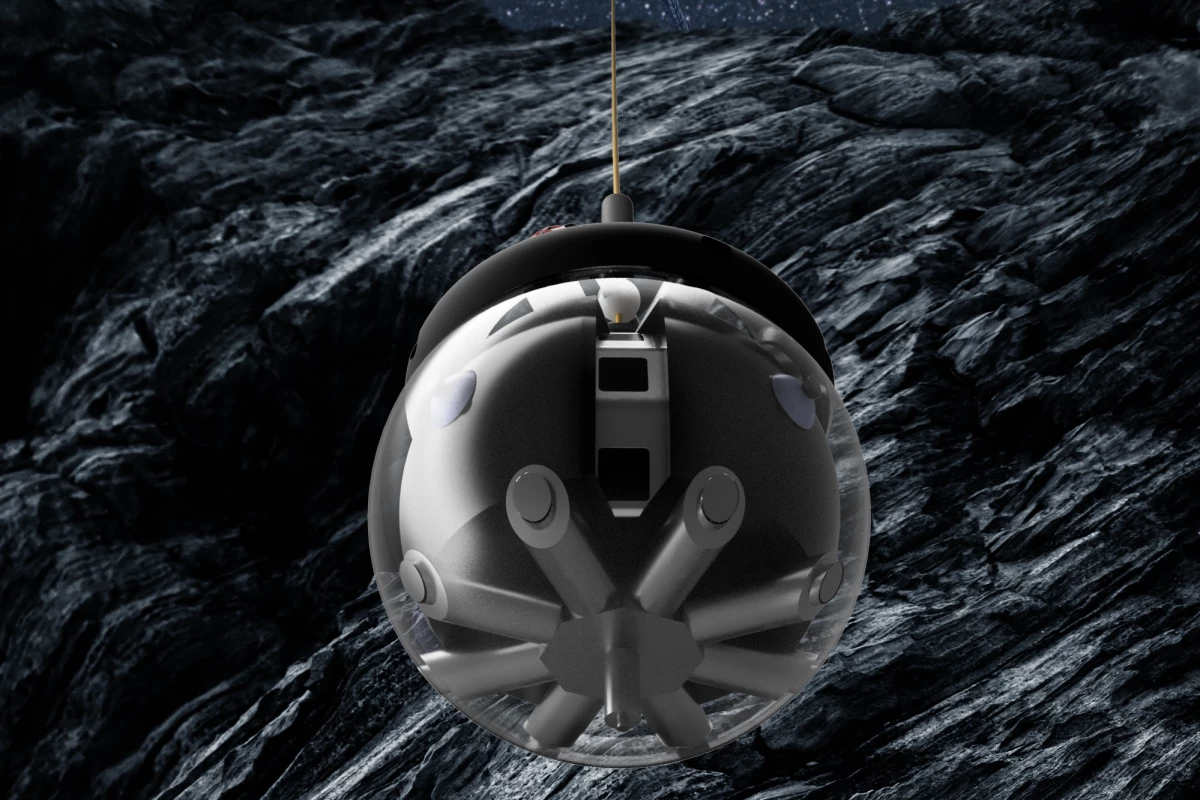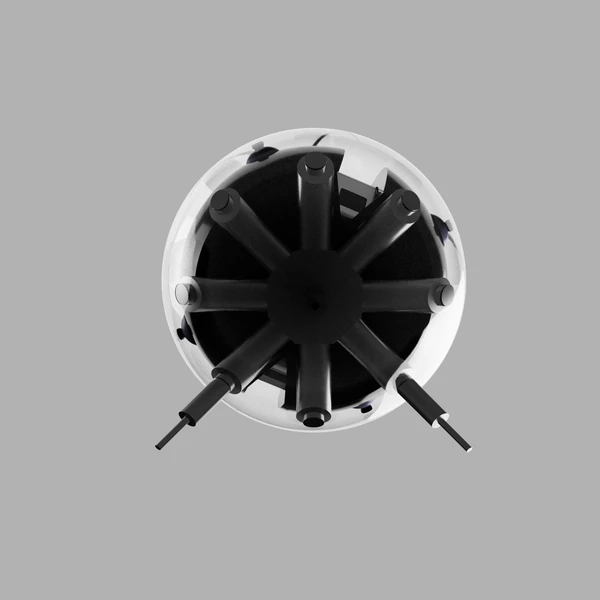ESA has unveiled a spherical robot that may one day be used to explore caves on the Moon. Called the Descent And Exploration in Deep Autonomy of Lunar Underground Structures (DAEDALUS) robot, the spelunking rover is being designed as part of the Lunar Caves-System Study by the space agency's Concurrent Design Facility at the European Space Research and Technology Centre (ESTEC) in the Netherlands.
Lunar caves are of great interest to mission planners, especially when it comes to setting up permanent outposts on the Moon. They are not only of great scientific interest because they could be a source of pristine geological samples, but they could also be a source of raw materials like water ice for life support and rocket fuel, and could be adapted as habitats that offer protection against cosmic radiation, temperature extremes, and micrometeorites.
The difficulty is that the most obvious caves have openings in the form of pits that have been mapped by orbiting spacecraft, so a tracked rover can't just roll into one for exploration. To overcome this, the 18-in (46-cm) DAEDALUS robot being designed by a team led by the Julius-Maximilians-Universität of Würzburg (JMU) would be lowered into these "skylights" on a tether.

Once on the ground, the robot would then disconnect and roll away propelled by extendable rods that could also be used to clear obstacles and analyze the properties of rock. The tether would serve as a Wi-Fi receiver to maintain communication with Earth as the robot maps the cavern in 3D using lidar, while also measuring temperatures and radiation.
So far, three prototypes of DAEDALUS have been constructed to test the sensors and the locomotion systems. A fourth prototype has been designed as a compact, tightly integrated device with a complementary payload set and high degree of autonomy.
"The design is driven by the requirement to observe the surroundings in full 360 degrees and the necessity to protect the interior from the harsh lunar environment," says Dorit Borrmann of the DAEDALUS team. "With the cameras acting as a stereo vision system and the laser distance measurements, the sphere detects obstacles during descent and navigates autonomously upon reaching the pit floor."
Source: ESA






